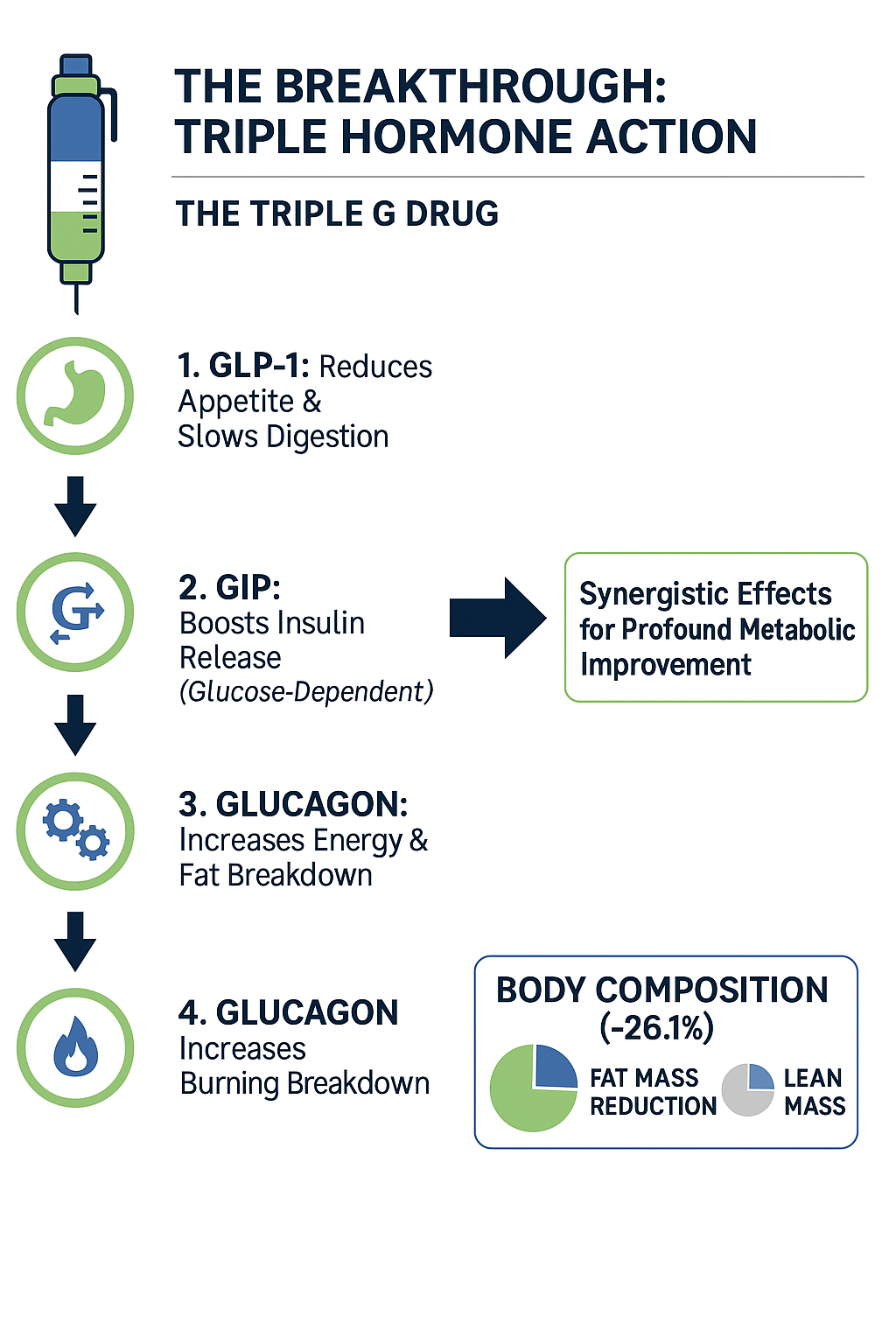
Ozempic has rapidly become one of the most talked-about medications in recent years, frequently appearing in news headlines and social media discussions. While its name is widely recognised, there is often confusion about its intended purpose. The primary, and crucial, approved use for Ozempic in the United Kingdom is for the management of type 2 diabetes. It is not a weight-loss drug, although weight loss can be a side effect.
The active ingredient driving its effects is called Semaglutide. This same active ingredient is also found in another medication, Wegovy, which is specifically approved for weight management. Understanding the distinction between these medications, their approved uses, and the regulatory landscape is vital for patient safety and effective treatment. This article will provide a comprehensive explanation of what Ozempic is used for, clarify its relationship with Semaglutide and Wegovy, and compare its approval status in the UK and the US. Read on to understand the precise applications and regulatory framework surrounding this significant medication.
What is Ozempic?
Ozempic is the brand name for a prescription medication whose active ingredient is Semaglutide. It belongs to a class of drugs known as glucagon-like peptide-1 (GLP-1) receptor agonists. In simple terms, these drugs work by mimicking the action of a natural hormone in the body called GLP-1.
When a person eats, the gut releases GLP-1, which plays a crucial role in managing blood sugar levels. It stimulates the pancreas to release insulin (which lowers blood sugar), prevents the liver from producing too much glucose, and slows down the rate at which food leaves the stomach. By activating the same receptors as this natural hormone, Ozempic helps individuals with type 2 diabetes achieve better control over their blood glucose levels.
Ozempic is not a pill; it is an injectable medication administered once a week via a subcutaneous injection, meaning it is injected just under the skin, typically in the abdomen, thigh, or upper arm. It is supplied in a pre-filled pen, making self-administration more straightforward for patients. The medication is available in several dosage strengths, allowing healthcare providers to tailor the treatment to an individual’s needs, usually starting with a lower dose and gradually increasing it to minimise potential side effects.

Approved Uses of Ozempic in the UK
In the United Kingdom, the Medicines and Healthcare products Regulatory Agency (MHRA) has licensed Ozempic for a single, specific purpose: the treatment of insufficiently controlled type 2 diabetes mellitus in adults as an adjunct to diet and exercise. This is a critical point to understand. Ozempic is a diabetes medication, not a weight-loss treatment.
According to the guidelines set out by the National Institute for Health and Care Excellence (NICE), which provides national guidance and advice to improve health and social care, Ozempic can be prescribed in a few different scenarios:
- As a monotherapy: It can be used on its own when metformin, the standard first-line treatment for type 2 diabetes, is considered inappropriate due to intolerance or contraindications.
- As an add-on therapy: It can be used in combination with other glucose-lowering medications when those drugs, along with diet and exercise, have not provided adequate blood sugar control.
Beyond its primary function of lowering blood sugar, significant clinical trials have demonstrated that Semaglutide offers additional health benefits. The landmark SUSTAIN-6 trial, published in The New England Journal of Medicine, found that Semaglutide significantly reduced the risk of major adverse cardiovascular events (such as heart attack, stroke, or death from cardiovascular causes) in patients with type 2 diabetes who were at high cardiovascular risk. This makes it a valuable treatment option for many individuals living with the condition, as cardiovascular disease is a common and serious complication of diabetes.
It is essential for patients to understand that Ozempic is part of a comprehensive management plan. Its effectiveness relies on being used alongside a healthy diet and regular physical activity. If you have type 2 diabetes, it is important to talk to your doctor or a diabetes specialist to determine if Ozempic is a suitable and safe option for your personal treatment plan.
Ozempic vs. Wegovy: Understanding the Difference
The confusion surrounding Ozempic and its use for weight loss stems from another medication called Wegovy. The most important fact to grasp is that both Ozempic and Wegovy contain the exact same active ingredient: Semaglutide. However, they are licensed, branded, and dosed for different medical conditions.
Here is a clear breakdown of the differences:
- Approved Indication:
Ozempic: Licensed for the treatment of type 2 diabetes.
Wegovy: Licensed for chronic weight management.
- Dosage:
While both are weekly injections, Wegovy is available in higher doses than Ozempic. The maximum dose for Ozempic for diabetes treatment is typically 2.0 mg per week, whereas the target maintenance dose for Wegovy for weight management is 2.4 mg per week. This higher dose was specifically studied and approved for its effects on weight.
- Who Can Use It:
Ozempic: Prescribed to adults with type 2 diabetes.
Wegovy: Indicated for adults with obesity, defined as a Body Mass Index (BMI) of 30 kg/m² or greater, or for those who are overweight (BMI of 27 kg/m² or greater) and have at least one weight-related medical condition, such as high blood pressure, high cholesterol, or type 2 diabetes.
The reason Semaglutide is effective for both conditions is due to its mechanism of action. As a GLP-1 receptor agonist, it not only helps control blood sugar but also acts on areas of the brain involved in appetite regulation, leading to reduced hunger and calorie intake. This effect, combined with slowing stomach emptying, helps people feel fuller for longer, which contributes to weight loss.
Crucially, both medications are intended to be used as part of a broader health strategy that includes a reduced-calorie diet and increased physical activity. They are tools to support lifestyle changes, not standalone miracle cures.
UK vs. US Approval Comparison
While the core use of Ozempic is consistent across the Atlantic, there are subtle but important differences in its approved indications between the United Kingdom and the United States.
Common Ground: Both the UK’s MHRA and the US’s Food and Drug Administration (FDA) have approved Ozempic for the treatment of type 2 diabetes in adults, to be used alongside diet and exercise to improve glycaemic control.
Key Difference in the US: The FDA has granted Ozempic an additional, specific indication that is not formally part of its UK license. In the US, Ozempic is also approved to reduce the risk of major adverse cardiovascular events (MACE), including heart attack, stroke, and cardiovascular death, in adults with type 2 diabetes and established cardiovascular disease. This approval was based on the compelling results from the SUSTAIN-6 clinical trial. While UK clinicians are aware of these cardiovascular benefits and consider them when prescribing, the formal license is slightly different.
Wegovy Approvals: Wegovy, the higher-dose Semaglutide formulation for weight management, is approved in both the UK and the US for chronic weight management. However, the timelines of approval and subsequent availability on the respective national health systems have differed. In the UK, its rollout on the NHS has been more gradual and subject to specific NICE guidelines regarding its cost-effectiveness and patient eligibility.
Potential Side Effects and Risks
Like all medications, Ozempic is associated with potential side effects. It is crucial for anyone considering this treatment to have a thorough discussion with their healthcare provider about the benefits and risks.
The most common side effects are gastrointestinal in nature and often occur when starting the medication or increasing the dose. These include:
- Nausea
- Vomiting
- Diarrhoea
- Abdominal pain
- Constipation
These side effects are typically mild to moderate and tend to decrease over time as the body adjusts to the medication.
There are also less common but more serious risks that patients should be aware of. These include:
- Pancreatitis: Inflammation of the pancreas, which can be severe.
- Gallbladder problems: Including gallstones.
- Kidney problems: Including potential kidney failure.
- Diabetic retinopathy complications: A risk for those with a history of eye problems related to diabetes.
- Risk of thyroid C-cell tumours: In studies on rodents, Semaglutide caused thyroid tumours. While it is not known if this occurs in humans, Ozempic is contraindicated for individuals with a personal or family history of medullary thyroid carcinoma (MTC) or in patients with Multiple Endocrine Neoplasia syndrome type 2 (MEN 2).
Before starting Ozempic, it is vital to discuss your full medical history with your doctor. For a complete list of side effects, warnings, and precautions, you should always refer to the Patient Information Leaflet (PIL) that comes with the medication. Open communication with your healthcare team is the best way to ensure your treatment is both safe and effective.
Conclusion
To summarise, Ozempic is a significant and effective medication licensed in the UK specifically for improving blood sugar control in adults with type 2 diabetes, when used in conjunction with diet and exercise. Its active ingredient, Semaglutide, is also available in a higher-dose formulation under the brand name Wegovy, which is licensed for weight management. It is this shared active ingredient that has caused public confusion, but their approved uses are distinct.
While both the UK and the US approve Ozempic for diabetes, the US has an additional formal indication for reducing cardiovascular risk in high-risk patients. Understanding these nuances is key to appreciating the medication’s proper role in healthcare.
Ultimately, the decision to use Ozempic or any prescription medication must be made in consultation with a qualified healthcare professional who can assess your individual health needs, medical history, and treatment goals. They are the best source for personalised medical advice. If you found this article helpful, please consider sharing it with others who may benefit from this clear and accurate information.
References
- Marso, S. P., Bain, S. C., Consoli, A., Eliaschewitz, F. G., Jódar, E., Leiter, L. A., … & Husain, M. (2016). Semaglutide and Cardiovascular Outcomes in Patients with Type 2 Diabetes. The New England Journal of Medicine, 375(19), 1834-1844. Available at: https://www.nejm.org/doi/full/10.1056/NEJMoa1607141
- National Institute for Health and Care Excellence (NICE). (2023). Semaglutide for treating overweight and obesity. Technology appraisal guidance [TA875]. Available at: https://www.nice.org.uk/guidance/ta875
- National Institute for Health and Care Excellence (NICE). (2024). Type 2 diabetes in adults: management. NICE guideline [NG28]. Available at: https://www.nice.org.uk/guidance/ng28
- U.S. Food and Drug Administration (FDA). (2020). FDA approves new drug for treatment of type 2 diabetes. FDA News Release. Available at: https://www.fda.gov/news-events/press-announcements/fda-approves-new-drug-treatment-type-2-diabetes (Note: This link is illustrative of FDA announcements; specific approval letters provide detailed indications).
Take charge of how you look and feel.
Backed by science. Guided by experts.
SheMed’s medical weight loss programme combines expert care and science-backed treatment to help you feel and look your best — for life.
SheMed’s medical weight loss programme combines expert care and science-backed treatment to help you feel and look your best — for life.
The content on the SheMed blog is provided for general informational and educational purposes only. While SheMed provides professional weight loss services and strives to ensure the information shared is accurate and up to date, we make no representations or guarantees as to its accuracy, completeness, or timeliness. This content should not be taken as personal medical advice or a substitute for consultation with a qualified healthcare provider. Always speak with your doctor or licensed medical professional about your individual health or medical needs before starting any new treatment or programme. Never disregard or delay seeking professional medical advice because of something you have read on this site. SheMed is not responsible for any actions you may take based on the information provided in this blog.
Subscribe to our Newsletter
Thank you! Your submission has been received!
Oops! Something went wrong while submitting the form.





